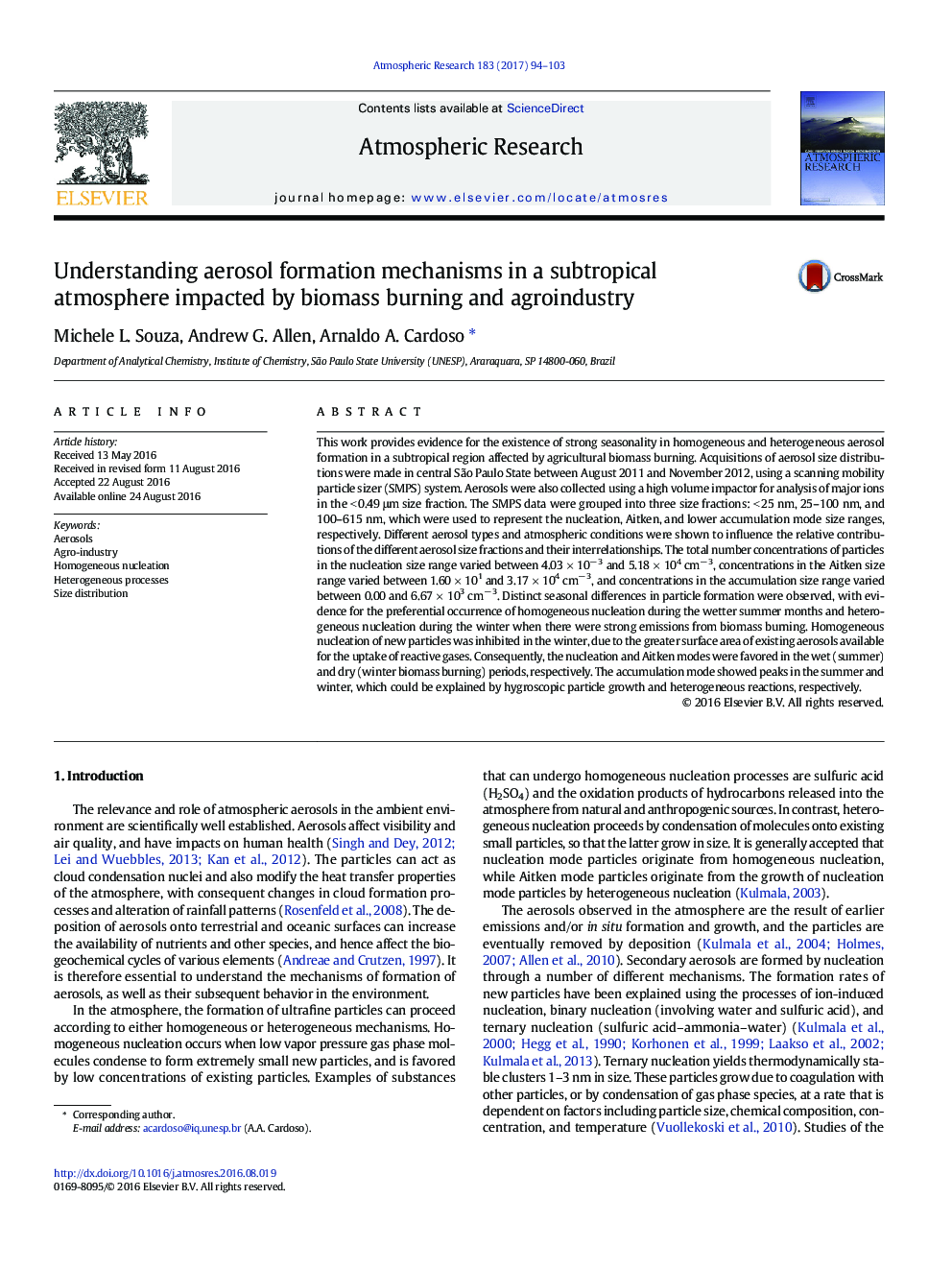| کد مقاله | کد نشریه | سال انتشار | مقاله انگلیسی | نسخه تمام متن |
|---|---|---|---|---|
| 4449550 | 1620498 | 2017 | 10 صفحه PDF | دانلود رایگان |
• Strong seasonality in aerosol formation was influenced by agricultural biomass burning.
• Homogeneous aerosol nucleation was observed during the wetter summer months.
• Heterogeneous nucleation was observed during the winter associated with strong emissions from biomass burning.
• High surface area of existing aerosols inhibited homogeneous nucleation of new particles in winter.
This work provides evidence for the existence of strong seasonality in homogeneous and heterogeneous aerosol formation in a subtropical region affected by agricultural biomass burning. Acquisitions of aerosol size distributions were made in central São Paulo State between August 2011 and November 2012, using a scanning mobility particle sizer (SMPS) system. Aerosols were also collected using a high volume impactor for analysis of major ions in the < 0.49 μm size fraction. The SMPS data were grouped into three size fractions: < 25 nm, 25–100 nm, and 100–615 nm, which were used to represent the nucleation, Aitken, and lower accumulation mode size ranges, respectively. Different aerosol types and atmospheric conditions were shown to influence the relative contributions of the different aerosol size fractions and their interrelationships. The total number concentrations of particles in the nucleation size range varied between 4.03 × 10− 3 and 5.18 × 104 cm− 3, concentrations in the Aitken size range varied between 1.60 × 101 and 3.17 × 104 cm− 3, and concentrations in the accumulation size range varied between 0.00 and 6.67 × 103 cm− 3. Distinct seasonal differences in particle formation were observed, with evidence for the preferential occurrence of homogeneous nucleation during the wetter summer months and heterogeneous nucleation during the winter when there were strong emissions from biomass burning. Homogeneous nucleation of new particles was inhibited in the winter, due to the greater surface area of existing aerosols available for the uptake of reactive gases. Consequently, the nucleation and Aitken modes were favored in the wet (summer) and dry (winter biomass burning) periods, respectively. The accumulation mode showed peaks in the summer and winter, which could be explained by hygroscopic particle growth and heterogeneous reactions, respectively.
Figure optionsDownload as PowerPoint slide
Journal: Atmospheric Research - Volume 183, 1 January 2017, Pages 94–103
